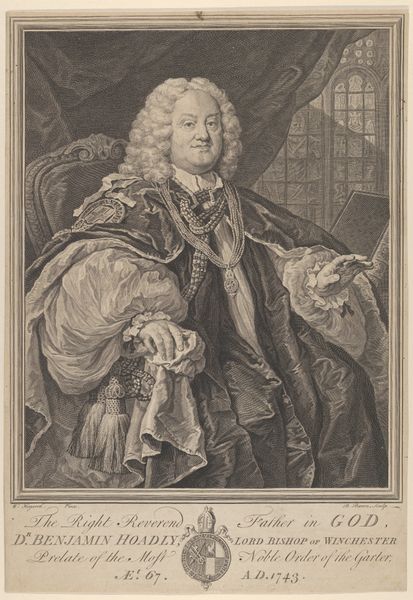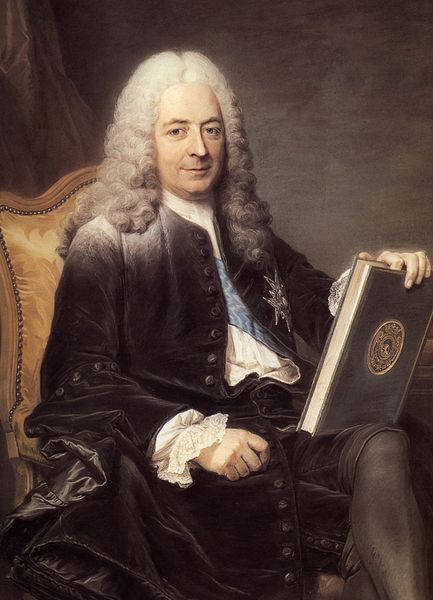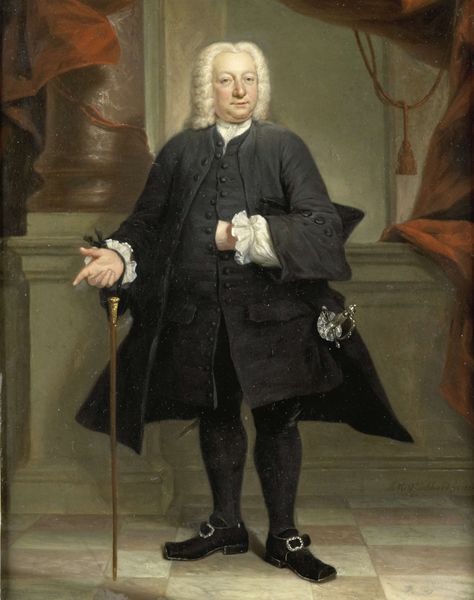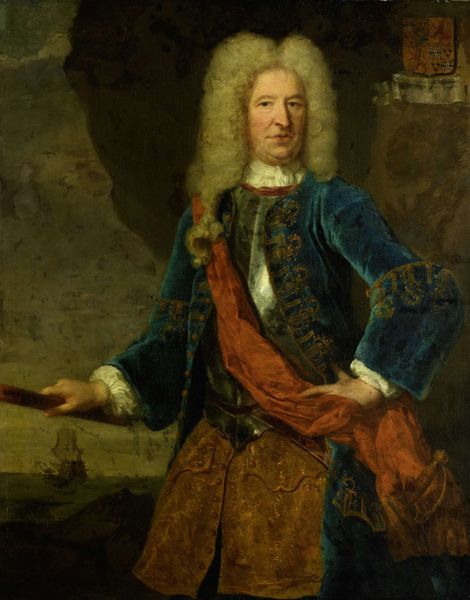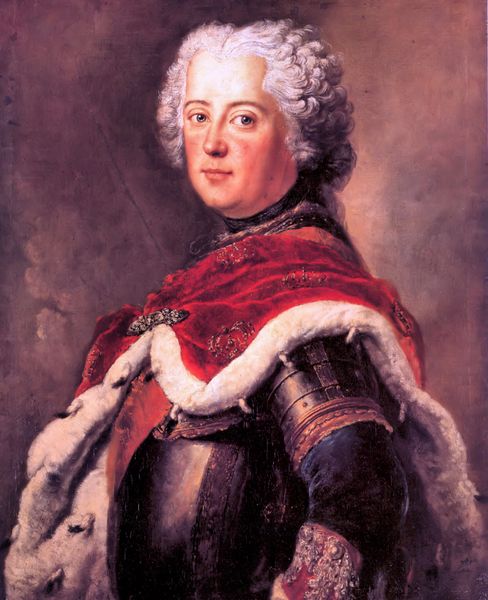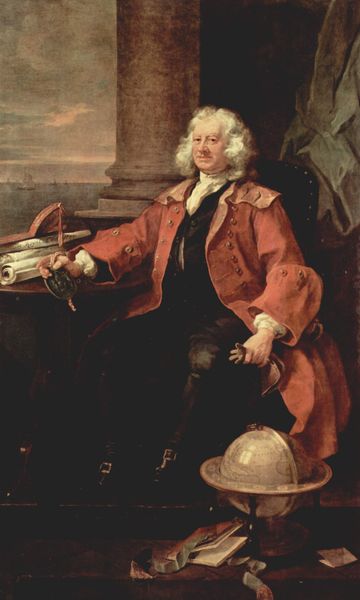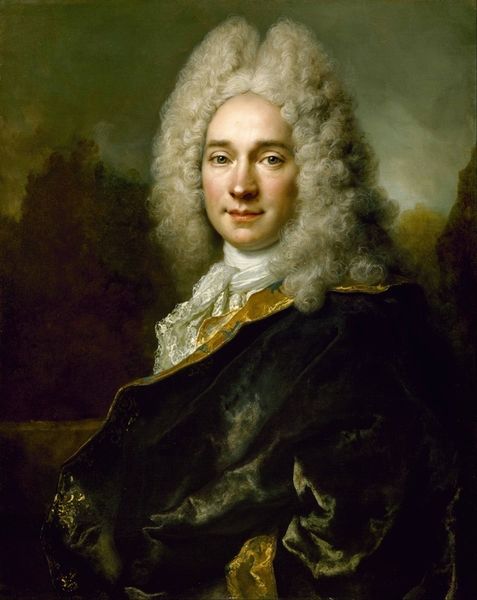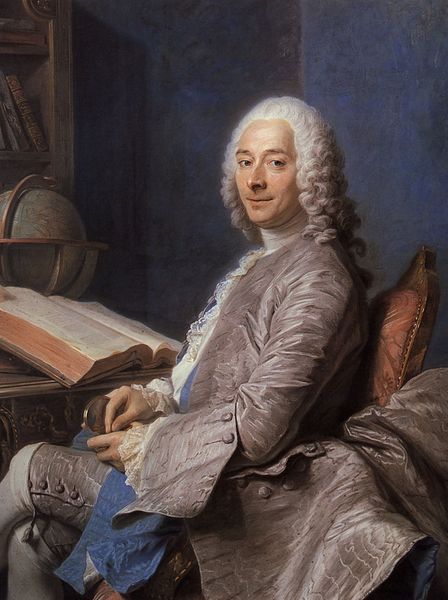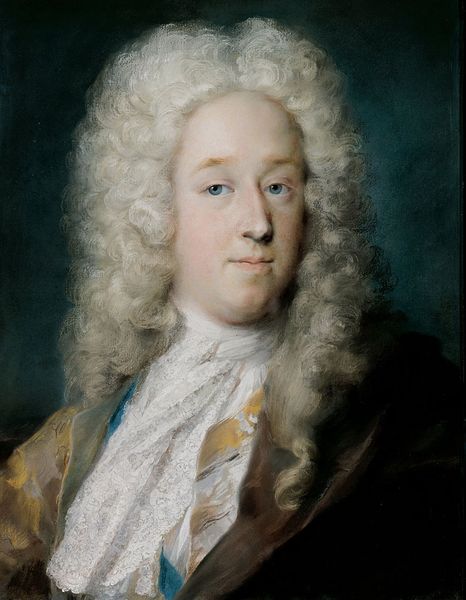
painting, oil-paint
#
portrait
#
baroque
#
painting
#
oil-paint
#
oil painting
#
history-painting
Dimensions: 125 x 100.5 cm
Copyright: Public domain
Editor: This is William Hogarth’s "Portrait of Bishop Benjamin Hoadly," painted in 1743, using oil paint. The details are remarkable! I find the textural contrast between the bishop’s silky sleeves and his dark, almost impenetrable robes quite striking. What do you make of the visual composition here? Curator: Indeed. The artist's strategic play of light and shadow cannot be overlooked. Note how the highlights define the contours of the face and wig, set against the recessive blacks and browns of the background and clerical garb. It guides our eye. The use of orthogonals—lines that converge toward a vanishing point—create a subtle depth, a constructed space entirely within the picture plane. The arrangement generates an impactful, visually complex whole. What visual relationships are suggested through such contrast, line, and tonal variation? Editor: I suppose it amplifies the presence of the Bishop himself, placing the figure at the forefront of our attention. His corporeal form becomes central to the image through such devices. It almost feels like the background is less important than the subject, it gives the feeling the painter wanted to show respect for the personality portrayed. Curator: Precisely! While the figure's character is important, let’s look again at how Hogarth's application of pigment shapes our experience. What effect does the broken brushwork in the bishop’s wig have in contrast to the smoother handling of the face? Editor: The rough strokes add volume and texture. Is it trying to capture his personality as much as physical traits, his essence? Curator: It also prevents the portrait from becoming static or overly idealized. Through a dynamic surface, we understand form in a way a smooth surface simply wouldn't allow. The formal elements guide our comprehension and appreciation of the painting's overall design. Editor: I see! Paying closer attention to Hogarth's methods and brushstrokes provides so much more understanding about how the artwork is conceived and the message that it is trying to tell us. Thank you! Curator: It is these observations of line, shape, color, texture, and their relationship to one another that can open new perspectives for us all.
Comments
No comments
Be the first to comment and join the conversation on the ultimate creative platform.
